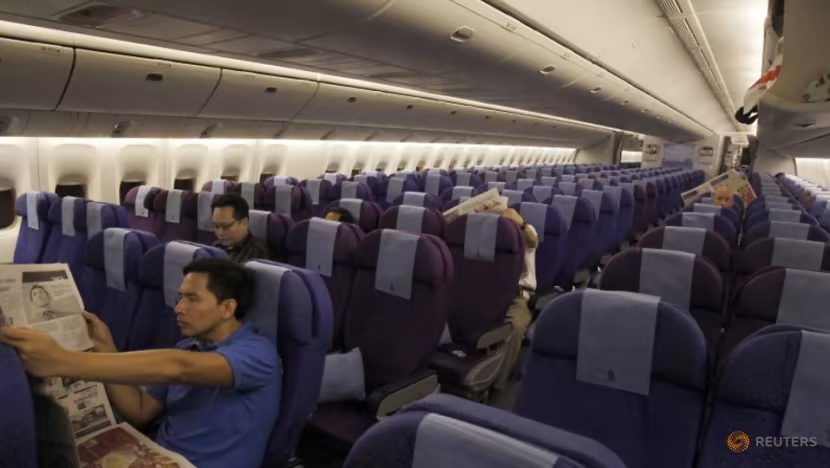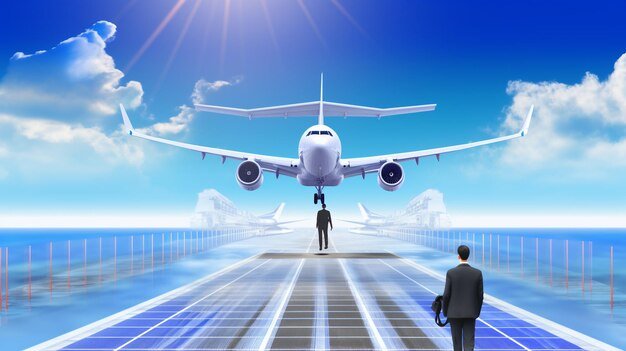Flying long-haul international flights demands exceptional skill, focus, and preparation from pilots. These flights, often lasting over 8 hours, come with unique challenges that require careful management to ensure safety and efficiency.
1. Fatigue Management
a) Extended Duty Periods
Pilots on long-haul flights often face extended duty hours, making fatigue a primary concern. Regulations mandate rest periods, but the physical and mental strain of prolonged alertness remains significant.
b) Circadian Rhythm Disruption
Crossing multiple time zones disrupts the body’s natural sleep-wake cycle, leading to jet lag. Pilots must adjust their schedules and rely on strategic naps to stay alert.
c) Limited In-Flight Rest Facilities
While larger aircraft may offer dedicated crew rest areas, space and comfort can still be restrictive. Rest quality during flights is often compromised.
2. Navigation and Communication Challenges
a) Complex Air Traffic Control (ATC)
Pilots must coordinate with multiple ATC centers across countries, each with unique procedures, accents, and frequencies. Miscommunication can lead to delays or route deviations.
b) Oceanic and Remote Navigation
Flying over oceans or sparsely populated regions requires advanced navigation tools like GPS and inertial navigation systems. Pilots also use track systems like the North Atlantic Organized Track System (NAT-OTS).
c) Weather Monitoring
Encountering turbulence, storms, or unexpected weather patterns over vast oceans or mountain ranges is common. Pilots must rely on real-time data and forecasting tools to ensure a safe route.

3. Operational and Aircraft Management
a) Fuel Efficiency and Load Balancing
Managing fuel for long-haul flights requires precision. Pilots must account for weight, wind patterns, and potential diversions to optimize fuel use and maintain aircraft balance.
b) Extended Operations (ETOPS)
Pilots flying twin-engine aircraft over remote areas must adhere to ETOPS regulations, which dictate how far the aircraft can fly from the nearest diversion airport in case of engine failure.
c) Aircraft Systems Monitoring
Long-haul flights require constant vigilance to monitor complex systems, ensuring that all components function optimally throughout the journey.
4. Psychological and Physical Strain
a) Mental Alertness
Maintaining focus during monotonous cruising phases is challenging, especially when dealing with fatigue or long hours. Pilots must practice self-discipline to avoid complacency.
b) Physical Discomfort
Sitting in a confined space for hours can lead to stiffness and discomfort. Pilots often perform light stretches and exercises during breaks to mitigate these effects.
c) Isolation and Loneliness
Flying through remote or night skies can feel isolating, especially during quiet periods. Effective teamwork between crew members helps alleviate this challenge.
5. Emergency Preparedness
a) Limited Emergency Resources
Over remote areas, immediate assistance or diversion options may be unavailable. Pilots must be prepared to handle medical emergencies, technical failures, or severe weather independently.
b) Diversion Airports
Pilots flying long-haul routes often have to plan for alternate airports that can accommodate the aircraft in case of an emergency.
6. Regulatory and Security Considerations
a) Compliance with International Regulations
Long-haul pilots must navigate varying aviation regulations and procedures across countries, which can differ significantly.
b) Security Risks
Some international routes may pass through politically unstable regions, requiring additional precautions and risk assessments.
7. Advances Helping Long-Haul Pilots
a) Enhanced Cockpit Technology
Modern aircraft are equipped with advanced autopilot systems, weather radars, and communication tools to reduce the workload on pilots.
b) Collaborative Decision-Making
Cockpit resource management (CRM) ensures that pilots, co-pilots, and air traffic controllers work together to address challenges effectively.
c) Improved Crew Scheduling
Airlines use predictive tools to design schedules that minimize fatigue and maximize efficiency for long-haul flights.
Navigating the complexities of long-haul international flights requires careful planning and reliable resources. While managing flight logistics, some travelers unwind with entertainment options like Stellarspins Online Casino during layovers. Understanding time zone changes and in-flight comfort strategies remains essential for any pilot or frequent flyer. Proper rest and hydration are key to combating jet lag effectively. Advanced navigation tools and weather monitoring help ensure safe transoceanic journeys. Continuous training prepares crews for diverse international scenarios. Embracing these practices makes global aviation more manageable and secure.
Conclusion
Flying long-haul international flights presents unique challenges that test a pilot’s skills, endurance, and adaptability. Despite the difficulties, advances in aviation technology, stringent regulations, and effective teamwork allow pilots to manage these demands successfully, ensuring safe and efficient global travel. For passengers, understanding these challenges highlights the expertise and dedication of the pilots who keep air travel reliable and secure.









